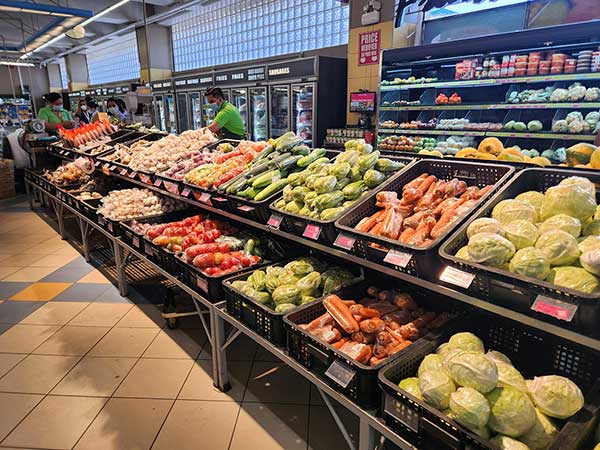
By Francis Allan L. Angelo
Inflation in Western Visayas rose to 4.1% in April 2024, up from 3.1% in March, according to the latest report released by the Philippine Statistics Authority (PSA) on May 9, 2024.
The region, though experiencing a lower inflation rate compared to 8.2% in April 2023, still faces challenges driven mainly by rising food prices and housing costs.
The primary driver behind the rise in inflation this April was the significant jump in the food and non-alcoholic beverages index, which soared to a 7.3 percent inflation rate, up from 5.5 percent in March.
Additionally, the slower decline in housing, electricity, gas, and other fuels, which dropped to -2.2 percent from -3.2 percent, coupled with transportation inflation rising to 3.1 percent from 2.4 percent, were significant contributors to the uptick.
Restaurants and accommodation services saw an inflation increase to 5.4 percent, and personal care and miscellaneous goods and services rose to 3.1 percent.
In contrast, inflation rates dropped in several areas, including alcoholic beverages and tobacco, clothing and footwear, furnishings, household equipment, health, and information and communication.
The region’s inflation trends indicate varied impacts across different sectors, with food inflation particularly affecting the area due to its substantial weight in the consumer price index.
In April 2024, the food sector alone contributed 3.00 percentage points to the headline inflation, primarily driven by high prices in cereals and cereal products, which saw inflation rates spike to 16.0 percent.
This sharp rise is attributed mainly to the higher costs of rice and other staple foods, impacting daily consumption for the region’s residents.
Maria Lourdes, a local market vendor in Iloilo City, shared her concerns: “The price of rice and vegetables has gone up noticeably. It’s tougher for people to afford the basics, and that’s hitting sales hard.”
This sentiment was echoed by consumers who are feeling the pinch of elevated prices at a time when the economy is still recovering from previous disruptions.
Transportation costs also contributed to the inflationary pressure, increasing to 3.1% in April from 2.4% in March. This rise reflects the broader economic recovery as fuel prices and transportation demand increase.
Despite the uptrend in most categories, some areas like health and communication saw slight decreases in inflation rates, providing minor relief.
However, essential goods and services, including housing and utilities, have continued to see price increases, further straining household budgets.
Some commodity groups managed to maintain stable inflation rates. Recreation, sport, and culture; education services; and financial services saw no change in their annual growth compared to the previous month.
Provincially, inflation rates varied, with Guimaras recording the highest monthly inflation rate at 6.8 percent, while Capiz and Iloilo had the lowest at 3.9 percent. Both Iloilo City and Bacolod City also noted increases in their inflation rates.
The report also highlights inflation rates for the bottom 30% income households in Western Visayas, which rose to 5.2% in April from 3.8% in March.
The data underscores the disproportionate impact of inflation on lower-income families, primarily driven by the same factors affecting the population such as transportation and food costs.
Residents like Joan Alonzo, a mother of two in Pavia, Iloilo, expressed growing concerns over rising living costs.
“Every peso counts for us, and even small price changes can force us to cut back on food or other necessities,” she said.
















